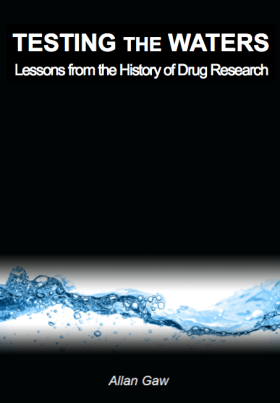Text originally published in ‘The Laughing Man’ magazine, Vol 5, NO1, 1984
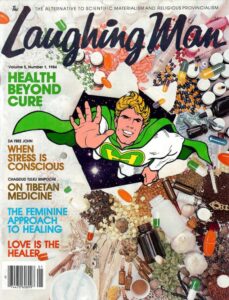
Paracelsus
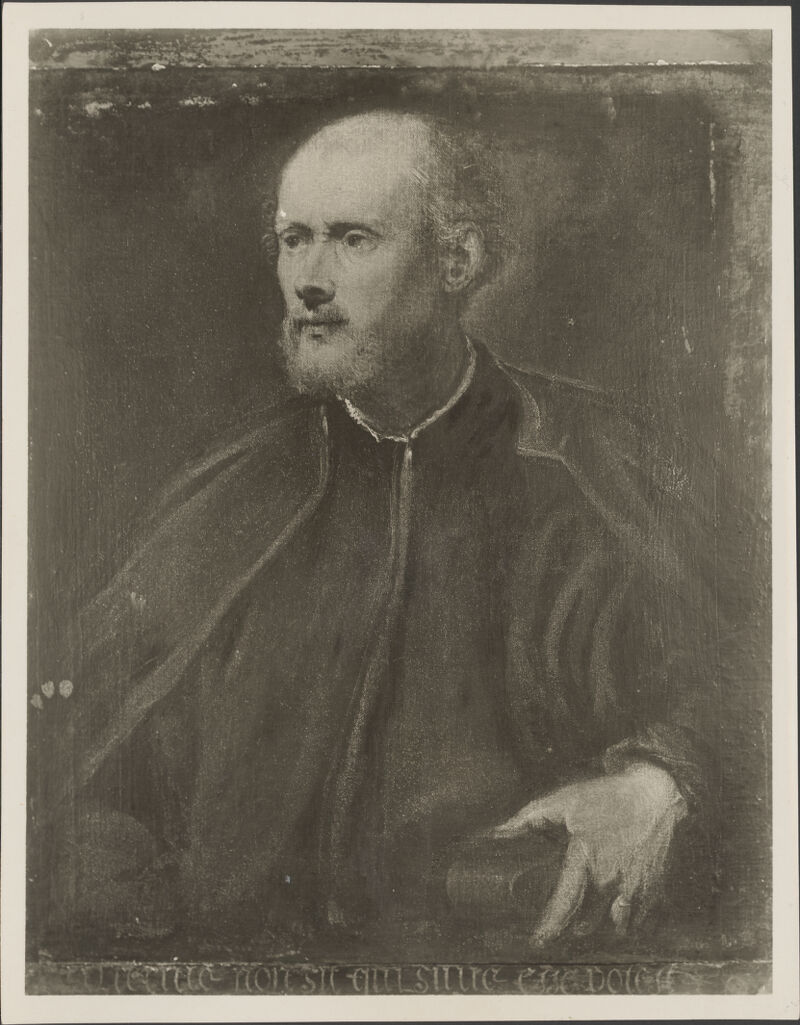
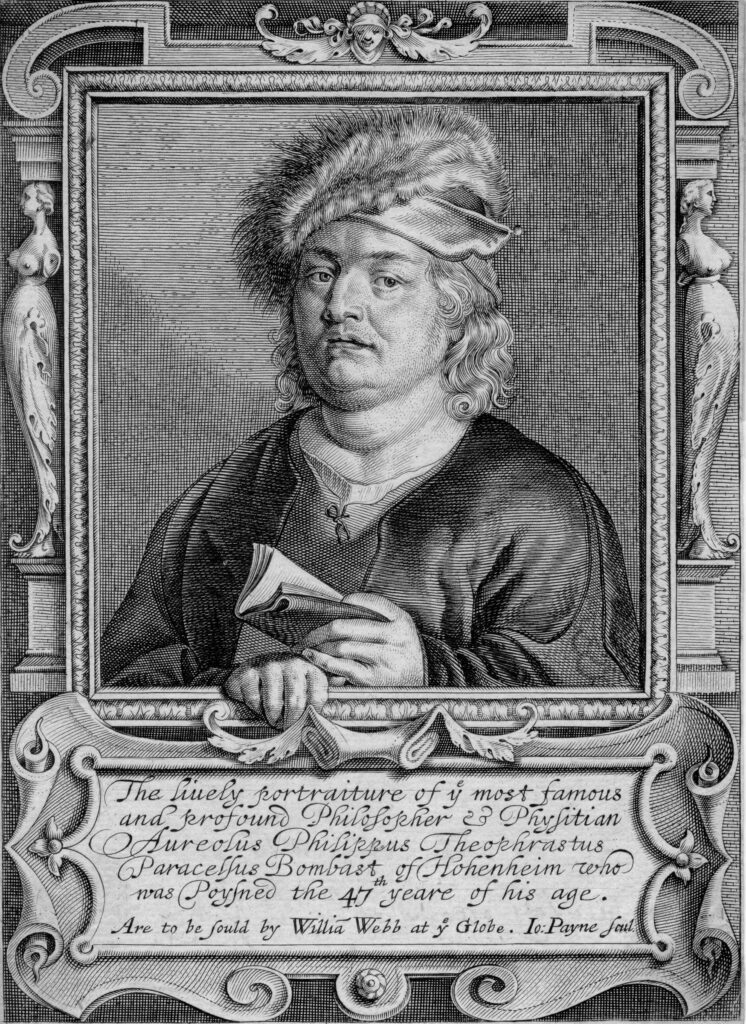
Aureolus Philippus Theophrastus Paracellus Bombast of Hohenheim
***
Shelly Lowenkopf is an adjunct professor of professional writing in the University of Southern California Graduate Program at Los Angeles. He has been a book editor for twenty-five years, during which time he edited a series on metaphysics. He has written over thirty volumes of fiction and nonfiction. Presently he is working on a study of Western mystics titled Mystics in the West and a large textbook on humor, The Laugh i on Me. He is a disciple of Swami Aseshananda.
2023
Introduction: Paracelsus (1492-1541) was determined, passionate, and thoroughly iconoclastic. Both a mystic and a physician, he railed against the religious beliefs and medical practices of his time. So virulent was his criticism of reigning authorities that he was on occasion forced to take flight for his own safety, only to reenact his karmic drama anew.
For, his short span was a living demonstration of the extended adolescence that results when a person achieves strength of will in the third stage of life without having developed emotional maturity in the second stage. Though he was forceful and brilliant, his effectiveness was constantly undermined by his antagonistic disposition.
Yet, he cannot be dismissed as simply an emotionally failed personality. To the poor and powerless, he displayed remarkable compassion and kindliness. He was so well loved by the peasantry that for three hundred years after his death his grave was a pilgrimage site for Austrians who hoped to be healed by the magic of his spirit or his relics.
Paracelsus exploded upon the late Middle Ages like a genie being freed from a bottle. A driven, impatient man who found himself born into a time of turbulent politics, see-sawing change, and choleric contentiousness, he was openly dissatisfied with the established wisdom of his time; he disputed the conventional answers that wisdom produced, and scorned the rationalist visions it inspired.
“I am resolved to pursue the highest and noblest philosophy,” he wrote, “and to let nothing divert me from it.”1
Acting on this lofty mandate to himself, Paracelsus became a physician unlike any the world had known before him, and over a brief life of forty-eight years, he managed to offend scientists, philosophers, religious leaders, politicians, and scholars. He wrestled with Science like a gladiator fighting for his life. He broke traditions heedlessly, and on more than one occasion he had to leave town precipitously when his opinions enraged his contemporaries.
Slight in stature, often abrasive in personality, he was frequently seen wearing a huge sword, which he claimed to need for protection. His balding head, domed with anarchistic curls and tufts of fuzz, was too large for the rest of his body; his clothing had the look of being slept in; his deep-set eyes had the quality of seeming to bore into things and see through them (a trait that probably came from nearsightedness). One contemporary, Johannes Oporinus, said Paracelsus was often given to blasphemy, unscientific technique, extensive drinking bouts, and frequent brandishings of his sword. The staid Oporinus, who went on to become a noted professor of Greek and the eventual publisher of another great physician, Vesalius, had perhaps been shocked for life by the rough-and-tumble life-style, raucous humor, and iconoclastic visions of Paracelsus.
Another contemporary, on whom Paracelsus effected a seemingly impossible cure, called him Lutherus medicorum, the Martin Luther of medicine. This charge, certainly accurate, cannot have been far from the surface of the crusty physician’s churning mind. Riding the crest of his reputation, he was appointed town physician of Basel, Switzerland, and lecturer in medicine at the university there. The appointment made, Paracelsus pinned a notice of his forthcoming lectures on the bulletin board of the university, inviting not only the enrolled students but anyone from any walk of life to attend. The medical authorities were incensed at this egalitarian gesture and outraged when he substituted a highly vernacular German for the traditional Latin in his lectures. This was interpreted as a direct duplication of Martin Luther’s impudence when, in 1517, Luther nailed his “Theses on Indulgences” to the doors of the Wittenberg Schlosskirche. And three weeks later, in the company of a group of cheering students, Paracelsus burned books written by Galen of Pergamum, the spectacular gladiator-turned-physician in the Rome of Marcus Aurelius. When the flames grew low, Paracelsus fed them from the selected works of Avicenna, the Arab “Prince of Physicians.” This reminded many of Luther burning a papal bull.
“Why call me a medical Luther?” Paracelsus snapped. “I leave it to Luther to defend what he says, and I will be responsible for what I say. That which you wish to Luther, you wish also to me: You wish us both in the fire.”2
Born a scant year after Columbus had set sail for the New World, Leonardo da Vinci had drawn his first flying machine, and Torquemada had given the Jews three months to accept Christianity, Paracelsus came from a good but down-at-the-heels family that lived in a hamlet about two hours from Zurich. “By my nature, I am not subtly spun,” he said of himself, “nor is it the custom of my native land to accomplish anything by spinning silks. Nor are we raised on figs, nor on mead [honey wine], nor on wheaten bread, but on cheese, milk, and oatcakes, which cannot give one a subtle disposition. Moreover, a man clings all his days to what he received in his youth, and my youth was coarse as compared to that of the subtle, pampered, and over-refined.”3 He thanked God he had been born German and offered added thanks for God “having made me suffer poverty and hunger in my youth,” circumstances that contributed to his lifelong sympathy with peasants, workers, farmers, the unfortunate, and the oppressed.
The name he took for himself is only one key to his dynamic and impetuous character. Paracelsus: Para, for beyond or greater than; Celcus, the highly venerated first century medical encyclopedist. Although his choice was intended satire, it proved to be prophetic as well. Paracelsus went beyond his namesake in professional accomplishments. As a physician, he had notable successes in the treatment of consumption and miners’ “black lung” diseases; of a syphilis epidemic that fanned through Europe; and of various skin diseases and wound-related infections. He notably advanced the concepts of homeopathic medicine and certain allergy treatments, successfully treated apoplexy, colic, gout, and metabolic disorders, and came amazingly close to identifying germs and microbes as the cause of many diseases. In spite of all these and other accomplishments, he was—and still is— denounced as a quack, a raging lunatic, a spiritist, and worse: a mystic, an alchemist, a magician, and an astrologer.

Many of the indictments leveled against him had a measure of truth in them. Although he rarely had funds or the kinds of power that would allow him to lead a life of ease, even when he did have money, he spent it on research, gave it to the poor, or supported himself in minimal comfort while providing free care to the poor. Often the charges against him came from the sources he spoke against in his impatience, exasperation, bewilderment, or moral outrage. Just as often, his detractors hung Paracelsus’s own words on him. His lack of guile and his proven record of coarseness or straightforwardness may have cheered his students and amused the peasantry, but they caused the Establishment to gnash its teeth and wring its hands. “I am Theophrastus,” he wrote, unrepentant, “and greater than those to whom you liken me; I am Theophrastus, and in addition I am monarcha medicorum, monarch of physicians, and I can prove what you cannot prove. I will let Luther defend his cause; I will defend my own cause and in so doing will defeat those of my colleagues who argue against
me.”4
Another key to this enigmatic man is found in one of the names he was given at the time of his christening. Today, the word “bombast” conjures rhetoric that is overly rich, concepts that border on the fustian, and a style that is associated with lectern thumping. All these bombastic traits and more were named after Paracelsus, who was officially named Philippus Aureolus Theophrastus Bombastus von Hohenheim.
What to do with such a man?
Besides running him out of town or giving him the equivalent of a boycott, it became popular to discredit him. But how to accord convincing discredit or damnation to a man, however exasperating, who wrote as a personal credo, and who by all accounts measured up to it, “There is nothing in me except the will to discover the best that medicine can do, the best there is in nature, the best that the nature of the earth truly intends for the sick. Thus I say, nothing comes from me; everything comes from the nature of which I, too, am part”?5
Thus does the mystic begin to appear in the physician. Early in his career, he made a solemn vow. Typical of the man, the vow was to himself:
“To perfect my medical art and never swerve from it so long as God grants me my office, and to oppose all false medicine and teachings. Then, to love the sick, each and all of them, more than if my own body were at stake. Not to judge anything superficially, but by symptoms; not to administer any medicine without understanding it; not to collect any money without earning it. Not to trust any apothecary, nor to do violence to any child. Not to guess, but to know . . .”6
When Paracelsus’s mother died, his father, an impoverished but dedicated doctor, moved to southern Austria to practice medicine and teach theoretical and practical chemistry at the Bergschule, where youngsters were trained to become overseers and analysts for nearby mining operations in gold, tin, mercury, iron, and copper. Still a young boy, he saw at first hand the huge smelting vats in which ores were changed into metals, he learned from his father about the strange and wonderful transformations that took place within retorts and crucibles, and he listened to the miners as they talked of veins of metals that grew in the dark rich earth as mushrooms and truffles grew.
By the time he was fourteen, he was completely caught up in an enormous desire to learn about these strange and wonderful elements and their various properties, and the opportunity came to him at the Bergschule. With his father’s blessings, very little money, and a raging hunger to learn the healing arts, he joined the legions of young men who prowled through the European centers of learning, going from one university to another, seeking teachers who seemed to be on the edge of the emerging Reformation and Renaissance.
Theophrastus ultimately took a bachelor’s degree in medicine from the University of Vienna after claiming attendance at Basel, Tubingen, Wittenberg, Leipzig, Heidelberg, and Cologne, finding something to carp about at each one. “How is it,” he asked, “that the high colleges are able to produce so many high asses?”7
In 1516, when he was twenty-three, Paracelsus received his doctorate from the University of Ferrara, a place he spoke of with delight and enthusiasm and where he was given leave to dissent with the reigning Establishment. Here he took on Aristotle, Galen, and Avicenna. He roared after the astrological determinists who were so prevalent at the time and put the finishing touches on his future approach to learning. He became a polymath, devouring everything that came his way. This, he said, was no less than a doctor’s true calling should be. “The universities do not teach all things, so a physician must seek out old wives, gypsies, sorcerers, wandering tribes, old robbers and outlaws. . . and take lessons from them. Knowledge is experience . . . and a doctor must be a traveler.”8
He was as good as his word again: He haunted the highways and back roads of Europe, caught a ship to England and wandered widely there, moved on to Ireland and then Scotland, all the while asking questions, observing, listening. Something was developing within him all the while, and his writings reflect an increased awareness of it. He began to prepare notes, treatises, and later, in a burst of enthusiasm, wrote a pointed manifesto which began with the words “I am different.”9
Gradually, Paracelsus learned what being different meant to him: his perceptions of mankind, nature, and his dearest preoccupation of all—God—had begun to merge until one started to be indistinguishable from the others. “There is nothing in Heaven and on earth which is not in Man. And God, who is in Heaven, is in Man,”10 Paracelsus said. The process of his destiny unfolded with greater certainty, and the more knowledge he sought, the more mystical he became.
After a brief service as an army surgeon, Paracelsus went to Russia, where he took respite from gun, cannon, and saber wounds and studied folk remedies of the peasants and nomadic tribes. He was held prisoner for a time by a band of Tartars, escaped, made his way to Lithuania, and thence to Hungary, where he spent considerable time with bands of gypsies, exchanging medical lore. In Italy, he signed up for another tour as an army surgeon, a profession not noted for the pay, status, or working conditions; nevertheless, it fulfilled his wish for more opportunities to try out his new knowledge on fresh wounds.
From Italy, he toured Egypt, Arabia, and the Holy Land, drawn irrevocably to Constantinople, arguably the most scientifically advanced city of the day. Throughout his wanderings, Paracelsus was integrating in the teeming crucible of his imagination all he had seen in each place. Alchemists, surgeons, metallurgists, midwives, astrologers, and magicians were sought out, questioned, and listened to avidly. In return, the intrepid physician bartered his own mounting catalog of observations and findings. As long as he saw the slightest practicality in a technique, he studied it, wanting to absorb all he could: To him, true knowledge had a tinge of the holy to it. “I seek to discover the latent forces of nature and how to use them. He who is born in imagination will discover the latent forces of nature and how to use them… Besides the stars already established, there is yet another star—Imagination—that begets a new star and a new heaven.”11
At length, his travels brought him back to Germany, where a noticeable reputation had preceded him—the small, feisty doctor had a following because of the numerous and seemingly miraculous cures he had effected. His destiny was shoving him toward Basel, but there were two important stops along the way. In Salzburg, he spent a year living in nearFranciscan poverty while he worked with the peasants, convinced that they had been trapped into untenable slavery by cruel, uncaring forces that wrung every last drop of humanity and comfort from their lives. Politically, he appeared to line up with all the popular causes of the time: Lutheranism (although he remained a staunch Catholic), the Brethren of the Spirit, the Anabaptists, and exponents of popular pantheism. He was arrested for his activities and for his professed sympathies, narrowly escaping a sure and painful execution.
He set out for the Alsatian center of Strasbourg, where he set up residence and joined the guild for surgeons and tradesmen. But his plans for a practice lasted only until his successes brought him into a public debate with Wendelin Hock, a noted surgeon. The subject of the debate was anatomy. Betrayed by his temper, Paracelsus lost, and influential patients he had hoped to attract stayed with Hock.
“Whenever I went I eagerly and diligently investigated and sought after the tested and reliable arts of medicine. I went not only to the doctors but also the barbers, bathkeepers, learned physicians, women, and magicians who pursue the art of healing; I went to monasteries, to nobel and common folk, to the experts and the simple.”
Paracelsus

In Basel, he was appointed town physician and lecturer in medicine at the university. At age thirty-three, he was at the peak of his powers. The rich and poor alike came to him for medical treatment, and students from all over Europe were drawn to his classes. For the first time in his life, he had relative wealth, opportunities to pursue his research, a sincere if grudging respect, and a prestigious lectern from which to air his unorthodox views.
Less than a year later, in the cover of night, Paracelsus had to flee for his life.
Some of the activities that caused him so much trouble, particularly in Basel, went beyond his open invitation to all who wished to attend his lectures, beyond the fact that he ignored the polite language of the day—Latin—in favor of a pithy, street-language German, beyond his burning of the works of the sacred cows of medicine. He persistently and vindictively sued all wealthy clients who fell behind in paying his fees; he publicly questioned the honesty of any magistrate who reduced the amount of payment if a wealthy patient had been taken to law; and he took on the local apothecaries, saying they should be licensed, subject to
supervision and frequent examination to determine their competence. He proposed rigorous price control of their prescriptions, and he suggested ethical standards to ensure they gave the patient the prescription he was paying for.
When the apothecaries took violent issue with this assault on their integrity, Paracelsus charged them with being in league with the doctors, who were just as likely, he said, to overcharge, overprescribe, and undertreat. And then he went after the city fathers for permitting this circuit of greed to happen in the first place.
Ardently believing in the beneficial effects of external suggestion and autosuggestion, Paracelsus felt that physicians should treat their patients with respect and should demonstrate how to keep the body free of disease and illness by maintaining a positive attitude. He attacked many of his colleagues for treating the disease and allowing the patient to die, which was his way of complaining that the medical establishment treated disease but not patients. He also held that doctors neglected to note that some patients had humors—metabolisms—that were more languid or more agitated than the norm, and he was particularly vocal about the mischief that could come when open wounds or sores were bandaged with such substances as moss, clay, dung, and animal flesh.
After leaving Basel, he wandered about Alsace, then Switzerland, Austria, Bohemia, and again in Austria. His length of residence was short, his literary output amazingly long and complex. In Nuremberg, where he hoped to make a final, permanent home for himself, he found the medical profession so firmly against him that he was driven to the flamboyant extreme of offering to cure any patient deemed incurable by the Establishment. Miraculously, he cured nine lepers, but when he said at a lecture that Lutheran orthodoxy was every bit as bad as the popery it sought to replace, he again alienated the very base of support he needed. Once again he moved on, his literary work and lectures against the ruling opinions and accepted scientific doctrine of the day growing in intensity.
In his remaining years of turbulence, wandering, acrimonious rages, and visions well beyond the range of his contemporaries, Paracelsus wrote as though his life depended on it, as though posterity expected it of him, as though his destiny were in firm control, dictating a various course of subjects. He wrote on anthropological matters, on hospitals, on man as the beginning and center of all creation. Through all the curmudgeonly posturing and invective, there is a clear vein of humanitv and kindness.
Of the complexities of Paracelsus’s charac-ter’ ^°lande Jac°bb , {one of his modern editors and translators, writes that he reminds her “of the mysteriously interlaced and often surcharged late-gothic ornaments, and sometimes of the clear, noble lines of a Bach fugue.”12 Dr. Jacobi’s selection of his writings, the most direct and engaging, stems directly from the interests of her mentor, Carl Gustav Jung, a polymath with whom Paracelsus invites favorable comparison. Indeed, Jung commemorated Paracelsus’s contributions to medicine, psychology, and alchemy in a number of essays and glowing references, particularly in his noted work Mysterium Coniunctionis.
Dr. Jacobi says of his anthropological writings, “Only a few men before him and hardly any after him have conceived an anthropocentric system so lofty and at the same time rational. In it everything follows logically from one source; it is a system that elevates profession to vocation, trade to art, and science to wisdom.”13
Another modern Paracelsian biographer, Franz Hartmann, judges the great teachers of morals and ethics to have been Buddha, Plato, and Jesus of Nazareth and the great teachers of science to have been Hermes Trismegistus, Pythagoras, and Paracelsus.
David Baumgart, a professor of comparative religions at Columbia University, draws the assessment of Paracelsus even closer to a neo-Platonist-mystical-scientific ideal by describing the man as “an indefatigable observer of nature just before the dawn of the age of exact science. But along with this, he certainly was a religious mystic and the builder of one of the most impressive systems of a mysticism of nature.”14
Laugh at his eccentricities and irascibilities, but celebrate him as the first modern medical scientist and physicist, a man who anticipated microchemistry, antisepsis, homeopathic medicine, modern wound surgery, and many forms of psychology. Over four centuries after his death, there is still a message for us to be extracted from his thick, layered, Joycean prose.
It is quite fitting that Paracelsus has attracted the interest of one of the most original and engaging novelists of our time, the Canadian scholar Robertson Davies, himself something of a polymath. The Paracelsian sense of mischief and irreverence, the Paracelsian notion of polarity between man and nature, Dionysius and Apollo, reason and intuition, haunt the paragraphs and chapters of Davies’s novel, The Rebel Angels. And what a fitting way of looking at Paracelsus himself—one who was certainly on the side of the angels, but who believed that the world is covered in darkness. Paracelsus believed that man has been charged by his creator to shed light on that darkness.
The scientific insights of Paracelsus rely heavily on personal revelations. Led by these, he stepped deftly through doors of gnosticism, cabalism, Hellenism, and empiricism, was comfortable in each surrounding, and sought to act as a medical Virgil for all of Mankind, leading it ultimately toward the upper reaches of the Danteesque vision. In the times when Hellenism flourished, Paracelsus would have been a Magus or master alchemist; in the Renaissance, he would have been placed with the ideal of the Priest-Physician.
For Paracelsus, the ultimate light was the alchemy that will help man smelt away the dross and ultimately discover the one Reality of God. On 24 September 1541, barely forty-eight, he gave up his outer trappings, his eccentricities, and his wanderings, in hopes, he said, of a true dwelling place, where he might never find fault, where he might experience joy upon joy, eternity upon eternity.
“Even if we had in our hands all the arcana and elixirs of the Great and the Little World, but not Thee, O Lord,” he wrote, “all this would be nothing! Close to Thee, in Thee, and with Thee alone is the eternal life and the light. In our bodies, after the great death, when it is as though renewed by the divine fire, the light will be translucent, and only then will it truly shine. God grant that this may be soon!”15 ■
Notes:
1. A. E. Waite, The Hermetic and Alchemical Writings of Paracelsus, the Great (London: Oxford Univ. Press, 1894), vol. 1, p. 14.
2. The Encyclopedia of Philosophy (New York: The Philosophical Press, 1965), p. 983.
3. Jolande Jacobi, ed., Paracelsus: Selected Writings (Princeton, N.J.: Princeton Univ. Press, Bollingen Series XXVIII, 1958), p. 14.
4. Ibid., p. 5.
5. Ibid.
6. Ibid.
7. The Encyclopedia of Philosophy, p. 982.
8. Franz Hartmann, The Life and Doctrines of Philip pus Theophrastus Bombast von Hoenheim: Known by the Name of Paracelsus (New York: Macoy Publishing, 1932), p. 261.
9. Jolande Jacobi, ed., Paracelsus: Selected Writings, p. 3. 10. A. E. Waite, The Hermetic and Alchemical Writings of Paracelsus, the Great, vol. 2, p. 304.
11. Henry Pachter, Paracelsus: Magic into Science (London: Longmans, 1951), p. 146.
12. Jolande Jacobi, ed., Paracelsus: Selected Writings, p. xviii.
13. Ibid., p. xlvi.
14. David Baumgart, Great Western Mystics (New York: Columbia Univ. Press, 1968), p. 152.
15. Jolande Jacobi, ed., Paracelsus: Selected Writings, p. 231.
Shelly Lowenkopf is an adjunct professor of professional writing in the University of Southern California Graduate Program at Los Angeles. He has been a book editor for twenty-five years, during which time he edited a series on metaphysics. He has written over thirty volumes of fiction and nonfiction. Presently he is working on a study of Western mystics titled Mystics in the West and a large textbook on humor, The Laugh i on Me. He is a disciple of Swami Aseshananda.
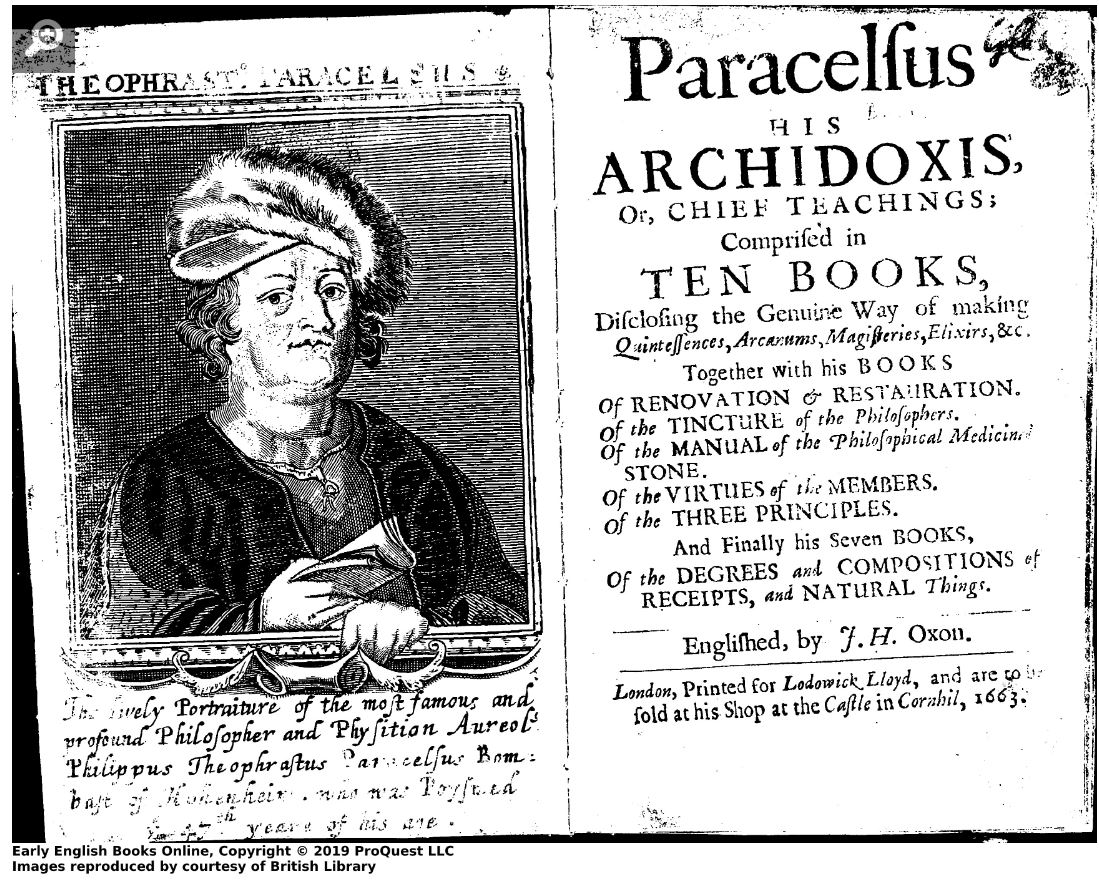
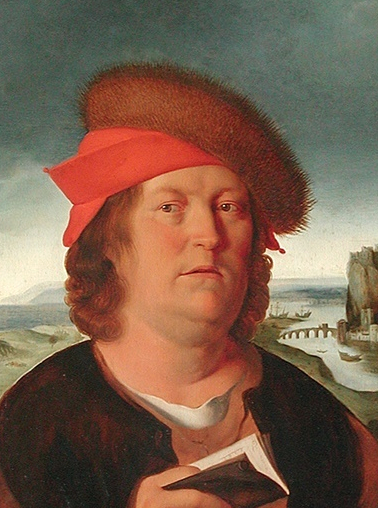
Where did medical science begin? Trial and error, superstition and good luck were probably the main drivers of discovery in pre-history. But, we certainly do not have to wait until the modern era, as some may imagine, to find an appreciation of the value of experimentation and personal experience over folklore.
As good a place as any to begin our search is on one summer evening in 1527, when three of the most famous physician/scientists in history came together across a gap of fourteen centuries. These were the Roman philosopher Galen, the Persian polymath Avicenna and the Swiss professor Paracelsus, pictured above.
Paracelsus
Paracelsus, or more correctly Theophrastus Phillippus Aureolus Bombastus von Hohenheim, was a controversial and outspoken critic of ancient medical authority. His teaching methods were unorthodox, e.g. inviting the general public to his lectures, which he delivered in German rather than Latin, while wearing an alchemist’s leather apron rather than an academic gown. His medical practice was also unconventional and owed more to his travels and his personal experiences than the accepted medical books of the day. Indeed he wrote:
Wherever I went I eagerly and diligently investigated and sought after the tested and reliable arts of medicine. I went not only to the doctors but also the barbers, bathkeepers, learned physicians, women, and magicians who pursue the art of healing; I went to monasteries, to noble and common folk, to the experts and the simple.
Despite the fact that he rejected much of accepted medical knowledge in favour of personal experience through experimentation, he firmly believed in gnomes, spirits and fairies, and there is no evidence that he ever studied medicine in any formal academic institution.
In 1526, he had been appointed to the Chair of Medicine at the University of Basel, Switzerland. However, he was not a popular choice. His arrogance preceded him and many of his contemporaries found him loathsome. But, Paracelsus was undaunted, writing:
Let me tell you this: every little hair on my neck knows more than you and all your scribes, and my shoebuckles are more learned than your Galen and Avicenna, and my beard has more experience than all your high colleges.
Perhaps driven by this arrogance, Paracelsus is reputed to have committed an act of vandalism before the university on St David’s Day, 24 June 1527, when, in a show of bravado and iconoclasm, he cast the works of Galen and Avicenna into a bonfire. A year later he was thrown out of Basel and he spent his final years as an itinerant, dying in Austria in 1541.
But who were these authors, and just why did Paracelsus find them so unequal in their achievements to the accoutrements of his footwear that their books should be consigned to the bonfire?
Both Galen and Avicenna were regarded by Paracelsus’ contemporaries as twin pillars of the medical establishment and authorities in medical science and practice. They were immortalised not only by their own writings but by their many devotees who used and reused their ideas.
Galen and Avicenna
Born into a wealthy family in Pergamon (now in modern day Turkey) in 129 CE, Galen grew up in the Roman Empire at the height of its power. He was originally destined to be a politician or a philosopher. His father, however, is reported to have received instruction in a dream from the Greek god of medicine to have his son trained in the healing arts. At the age of 16, he began his studies in Pergamon, which at the time was a cultural and intellectual centre. Three years later his father died and Galen found himself suddenly independently wealthy. Using his new-found resources, he decided to travel in order to expand his medical knowledge and experience. In 157 CE at the age of 28, he returned home and was appointed to the prestigious role of physician to the gladiators. This post allowed him to expand further his knowledge of trauma and human anatomy. Four years later Galen decided to travel to Rome where he found fame and success, eventually become the personal physician of the imperial family. He continued to practice, write and move in the highest tier of Roman society until his death in around 216 CE.
Galen is thought to be the most prolific author of antiquity, producing around 600 books, of which only around one third survive. He wrote on diverse subjects including all aspects of medicine, anatomy and physiology as well as philology and philosophy, and any attempt to discuss his output can hardly do justice to its breadth and depth.
Today, Galen is often today seen as a force that held back the progress of medicine, especially because of his adherence to, and elaboration of, the Hippocratic humoral theory of disease. However, the problem was with Galen’s unquestioned authority, not with Galen himself. His thoughts on the humoral theory and even mistakes he made in his understanding of human anatomy went unchallenged for 1,400 years. But, he would have been the first to challenge his own beliefs. He wrote:
I will trust no statements until I have tested them for myself as far as it has been possible for me to put them to the test. So if anyone after me becomes, like me, fond of work and zealous for truth, let him not conclude hastily from two or three cases. Often, he will be enlightened through long experience as I have.
Although Galen placed great store in the Hippocratic writings, which were already more than 500 years old when he was studying them, he was keen not to take things at face value. Galen believed that the practice of medicine would advance through a combination of reason and experience, adding,
The surest judge of all will be experience alone, and those who abandon it and reason on any other basis not only are deceived but destroy the value of the treatise.
Almost 800 years after Galen’s death, in 980 CE, in a village near Bukhara (now in present day Uzbekistan) Abu ‘Ali al-Husayn ibn ‘Abd Allah ibn Sina was born. He was a child prodigy, who is said to have memorised the Qur’an by the age of ten, and would become known as Ibn Sina, or in the West as Avicenna, one of the most celebrated Persian physician-scientists and philosophers of Islam’s golden age. He died in 1037 CE, but his influence lived on through his writings, especially his celebrated Canon of Medicine. Avicenna’s approach to medicine owed a great deal to the teachings of Hippocrates and Galen and indeed the perpetuation of the Hippocratic and Galenic traditions of medicine into the mediaeval world are often attributed to his writings. These writings, however, not only incorporated much of Galen’s ideas, but also assimilated works from Persian, Arabian and Ayurvedic texts, as well as Avicenna’s own experience.
Conclusions
When Paracelsus burned the books of Galen and Avicenna it was obviously designed to be a piece of theatre consistent with his notoriously volatile personality, but it was also an attempt to turn a new page in the history of medicine. However, others before Paracelsus had already begun to write on that next page. While the middle ages are usually regarded as a dark time that would only be illuminated by the light of the renaissance, there were physicians, scientists and scholars who, despite their adherence to the authority of antiquity, could still ask important new questions.
Despite Paracelsus’ showy attempt to shake off the shackles of the past, perhaps it was not Galen and Avicenna who should have been torched. These Roman and Persian physicians had done everything they could to advance the practice of medicine and place it on a firmer evidence-based foundation. Admittedly, they were constrained by their adherence to the accepted wisdom passed down through the years (in Galen’s case he was overly adherent to Hippocrates, and Avicenna in turn, was a slave to Galen), but they both placed high value on personal experience and experimentation. It would no doubt have astonished both Galen and Avicenna if they had learned that their works had gone unchallenged for centuries, and it would almost certainly have grieved them that medicine had, as a result, become frozen in time. They had each taken ancient traditions and developed them. In their writings, we hear not just an impersonation of their predecessors, but their own distinctive voices.
What comes next in the story, then, is the steady development of scientific thinking as it is applied to the practice of medicine. First there is the questioning of authority and the search for new answers through experimentation, and then we see the emergence of a new medicine — one built increasingly upon evidence.
© Allan Gaw 2016
This is an extract from my new book, published on March 1, 2016, which is now available for from amazon:
TESTING THE WATERS
LESSONS FROM THE HISTORY OF DRUG RESEARCH
What can we learn from the past that may be relevant to modern drug research?
In this book Allan Gaw shows us how the past can illuminate the present and help us understand where we are and how we have come to be here. We will start in a world, more than two thousand years ago, long before science, but where highly disciplined minds could still formulate rigorous strategies for the evaluation of new drugs. We will move forward to see the parts played by an Emperor’s physician in Ancient Rome, a Persian philosopher and a country doctor in England. We will visit the battlefields of Europe, the laboratory benches of a German drug company and see the parts played by serendipity and innovation in the development of new drugs. In the early 20th century we will see that tragedy can be the result of inadequate testing of medicines as well as being the catalyst for change. And, we will discover how the story of one sleeping tablet changed everything.
http://www.amazon.com/Testing-Waters-Lessons-History-Research-ebook/dp/B01AXBM0WQ/
